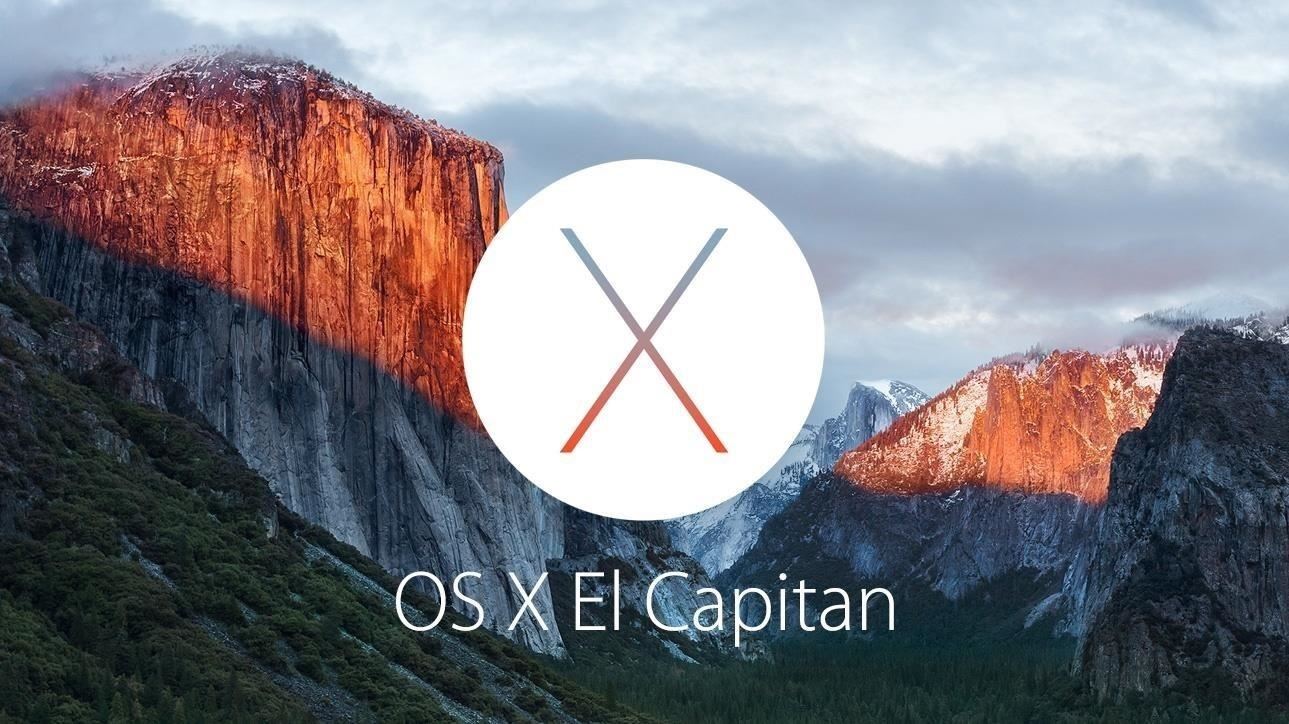If you use pkgutil to expand the InstallMacOSX.pkg it opens to three items, the Distribution file, InstallMacOSX.pkg and Resources. You can alter the Distribution file to ignore the supported platform check, see below.
Tutorial: How to Create EI Capitan Bootable USB on Windows 10 PC To make a bootable USB from EI Capitan dmg file, we need a special software in place. In our case, it is UUByte DMG Editor, an award-winning app for creating bootable OS X and macOS USB installer. The El Capitan installer file came down to my Applications folder without problem, but multiple repeat attempts to create a bootable USB (16gb) drive using Diskmaker X 5 has failed. The program appears to go through all the steps, but finally the USB drive is never findable as a bootable drive. From this point, we've now provided plenty of installation files whether for installing macOS on Windows or on Mac. Such as macOS Sierra DMG, macOS High.
Creating the Install OS X El Capitan.app on a mac that came with a newer OS than El Capitan.
Download the InstallMacOSX.dmg from Section 4 of How To Upgrade To El Capitan
Double-click to open InstallMacOSX.dmg to Install MacOSX.pkg.
Drag InstallMacOSX.pkg to the Desktop.
Open Terminal, enter the text

A folder will be created on the Desktop after a while with the contents of the .pkg file.
In there you will see an item called Distribution, Control-click on that and select Open With
go to Other and select Text Edit.
When the file opens scroll down to the section that reads,
function isSupportedPlatform(){
type in at the end return true; so it now reads as,
function isSupportedPlatform(){return true;
Now click Save and close the document.
Go back to Terminal and enter the text,
press Return, after several minutes, be patient, (check to see if the prompt has returned to Terminal) a new package will be created on the Desktop.
When created double-click on that and an installation window will open where you will now convert the
new InstallElCapitan.pkg to the Install OS X El Capitan.app which will be placed in your Applications folder.
You can now create a bootable USB using the install app and createinstallmedia,
If you have the time I would be grateful if you could give this a trial, it works here on my mac, but I would like confirmation from yourself or any others reading this that the procedure works on macs that came with macOS Sierra or newer pre-installed. Oh and tell me if my description of the procedure is easy to follow and understand..

Jan 15, 2020 12:58 AM
If you use pkgutil to expand the InstallMacOSX.pkg it opens to three items, the Distribution file, InstallMacOSX.pkg and Resources. You can alter the Distribution file to ignore the supported platform check, see below.
Creating the Install OS X El Capitan.app on a mac that came with a newer OS than El Capitan.
Download the InstallMacOSX.dmg from Section 4 of How To Upgrade To El Capitan
Double-click to open InstallMacOSX.dmg to Install MacOSX.pkg.
Drag InstallMacOSX.pkg to the Desktop.
Open Terminal, enter the text
A folder will be created on the Desktop after a while with the contents of the .pkg file.
In there you will see an item called Distribution, Control-click on that and select Open With
go to Other and select Text Edit.
When the file opens scroll down to the section that reads,
function isSupportedPlatform(){
type in at the end return true; so it now reads as,
function isSupportedPlatform(){return true;
Now click Save and close the document.
Go back to Terminal and enter the text,
How To Make A Bootable Usb Drive

press Return, after several minutes, be patient, (check to see if the prompt has returned to Terminal) a new package will be created on the Desktop.
When created double-click on that and an installation window will open where you will now convert the
new InstallElCapitan.pkg to the Install OS X El Capitan.app which will be placed in your Applications folder.
You can now create a bootable USB using the install app and createinstallmedia,
If you have the time I would be grateful if you could give this a trial, it works here on my mac, but I would like confirmation from yourself or any others reading this that the procedure works on macs that came with macOS Sierra or newer pre-installed. Oh and tell me if my description of the procedure is easy to follow and understand..
Make Bootable El Capitan Flash Drive
Bootable Flash Drive Creator
Jan 15, 2020 12:58 AM